Best Everyday Running Shoe for Beginners
Hoka Clifton 9
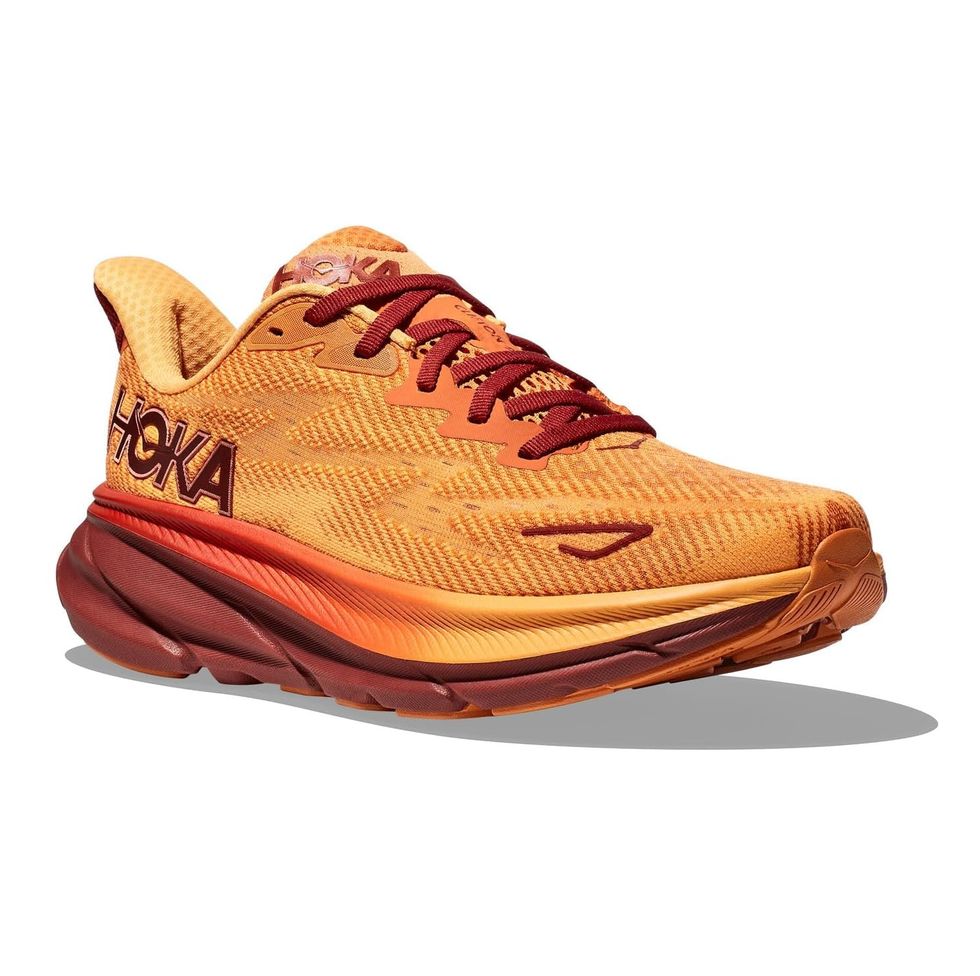
Best Everyday Running Shoe for Beginners
Hoka Clifton 9
Credit: ZapposConsNot the most cushioned option out there
The Hoka Clifton 9 is a true workhorse that provides a blend of cushioning and energy return that is ideal for those long run days. I have used Cliftons for the bulk of my long training runs and I am constantly surprised at the amount of miles I can rack up with each pair. This have been my “go-to” shoe when I am in the mood for some big miles or have a hefty training block.
The magic lies in their Meta-Rocker ™ technology, which gives some propulsion with each step to facilitate smooth transitions. The meta-rocker outsole pairs well with well-balanced (not super plush) foam that helps reduce the shock into your legs that comes with running.
Read more: Best Hoka Running Shoes
Weight8.70 ozHeel to toe drop5 mm
Best Beginner Running Shoe for Infrequent Runners
Nike Pegasus 40
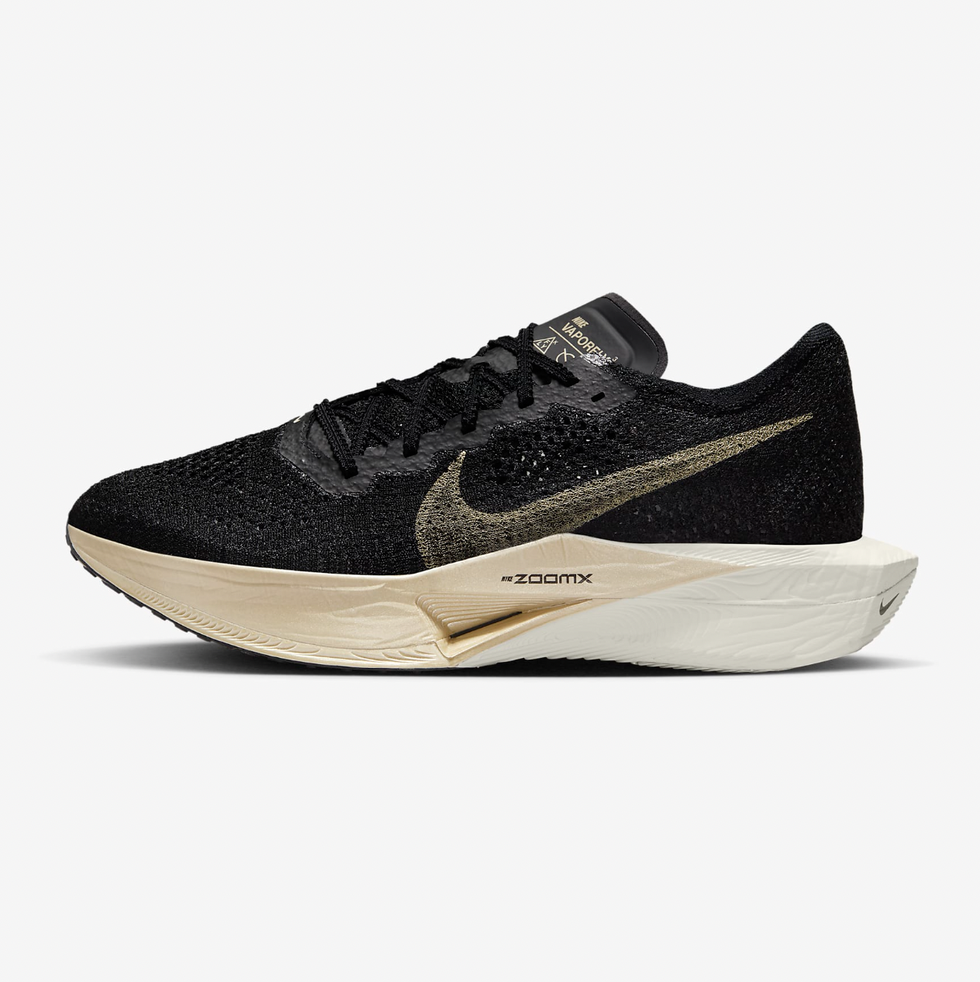
Best Splurge Race Running Shoe for Beginners
Nike Vaporfly 3
Credit: Nike
I raced the NYC United Half Marathon in these, and I must say, it was my best race yet. The Nike Vapor Fly are notorious amongst elite runners, however, that doesn’t mean beginners can’t reap the benefits of these shoes too. I feel remarkable whenever I run in these, and I always look forward to lacing them up whenever I get the chance.
There have been three iterations of this shoe thus far, and it gets better each and every time. (A fourth version is out now, but currently sold out.) A carbon fiber fly plate helps promote propulsion for race day and speed training, and is complemented by a generous stack of bouncy cushioning. I can’t recommend this shoe enough, especially for someone that is looking for a shoe to help them experiment with faster paces.
Read more: How to Wear Carbon Plate Shoes
Weight7.05 ozHeel to toe drop8 mm
Advertisement – Continue Reading Below
Best Do-It-All Running Shoe for Beginners
adidas Running Adizero Boston 12
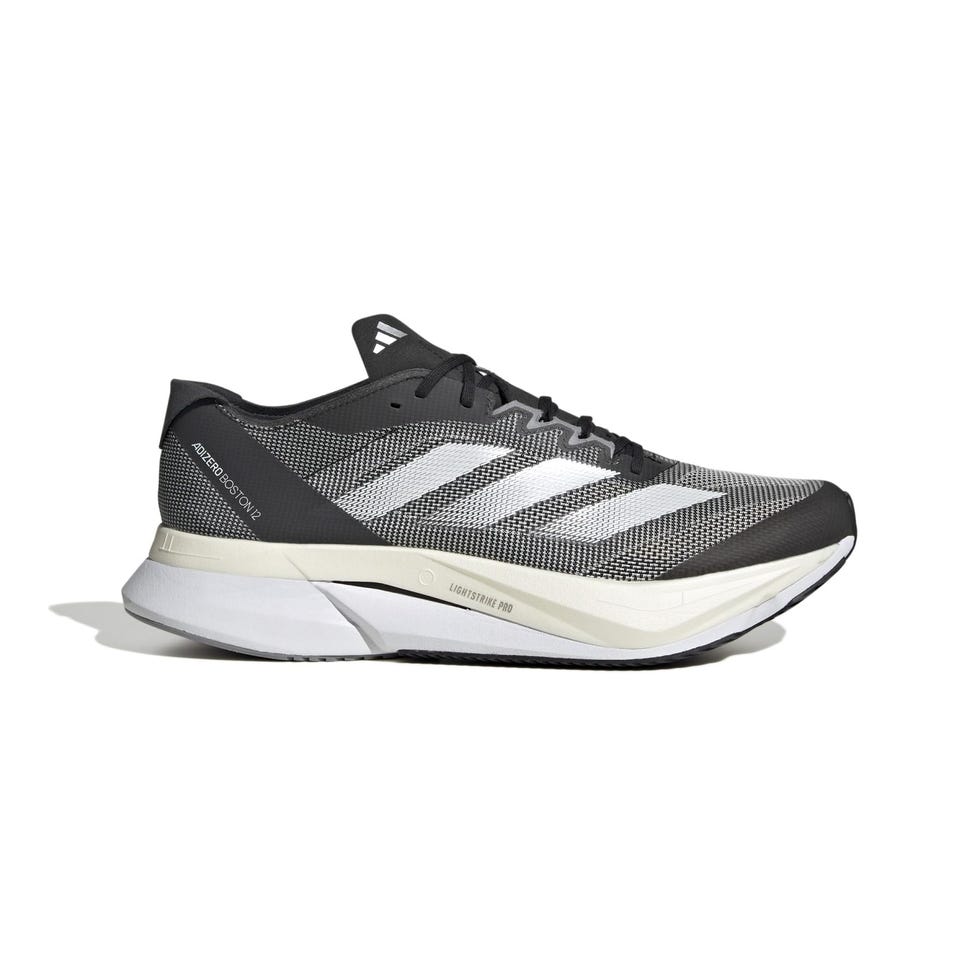
Best Do-It-All Running Shoe for Beginners
adidas Running Adizero Boston 12
The Adizero Boston series is a great entry level shoe that hits all the marks for most runners. I found these shoes to be incredibly versatile; they don’t do one specific thing perfectly, but does a decent job at everything. A Jack of all trades kind of shoe that would make a great first running shoe for most people.
It features a snug midfoot that gives a locked-down feeling I love for hitting faster paces on training runs. The brand’s Energy Rods technology is designed to improved support and stability through the foot without limiting movement, a promise I feel it delivers on.
If you find yourself casually hitting some miles here and there or want to sign up for a few local races in the future, I can see these being a great bang for your buck buy. My only issue with this shoe is that you may find some heel slippage with it, but it’s nothing a runner’s knot can’t mitigate.
Read more: Best Adidas Shoes You Should Know
Weight9.5 ozHeel to toe drop7 mm
Most Durable Running Shoe for Beginners
Mizuno Wave Rider 27
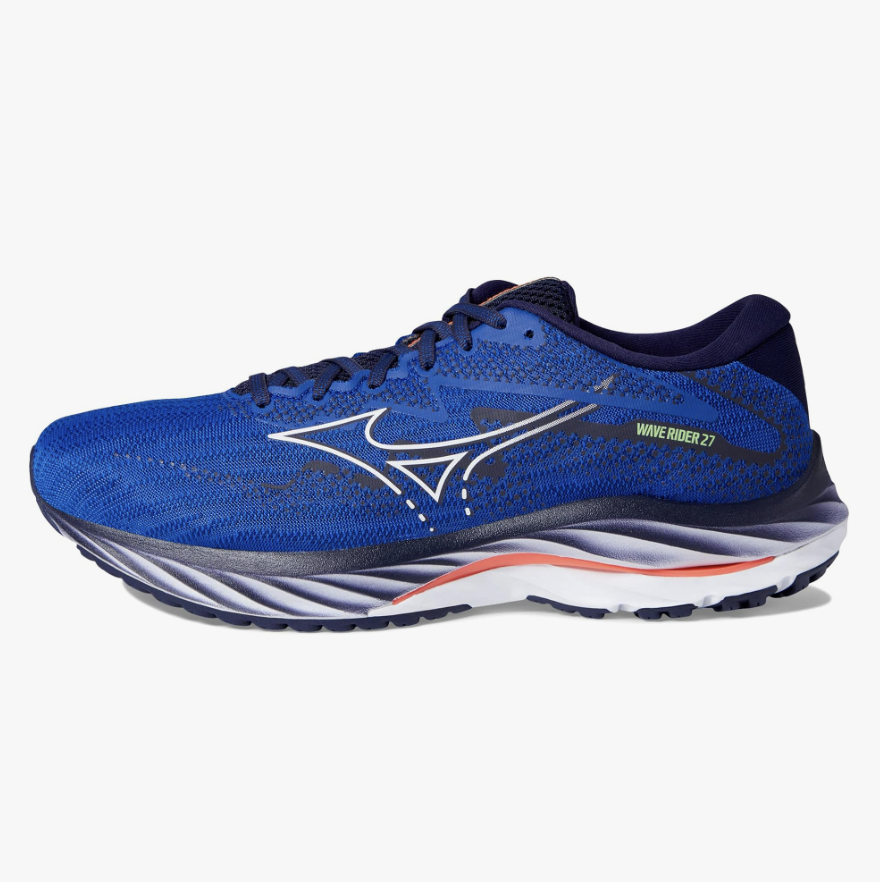
Most Durable Running Shoe for Beginners
Mizuno Wave Rider 27
Credit: Zappos
The balance of cushioning and stability in this shoe make it one of the first running shoes that come to mind when making recommendations for beginners. The midsole is plush and feels bouncy, while the outsole is ultra grippy and feels secure even in slick conditions. It’s also an incredibly durable shoe that is able to sustain plenty of pavement miles.
This shoe is a bit heavy for my liking nowadays, but I started out my running journey with this shoe and it got me to where I am today. I’ll always have love for it.
Weight9.9 ozHeel to toe drop12 mm
Best Lightweight Running Shoe for Beginners
HOKA Rocket X 2
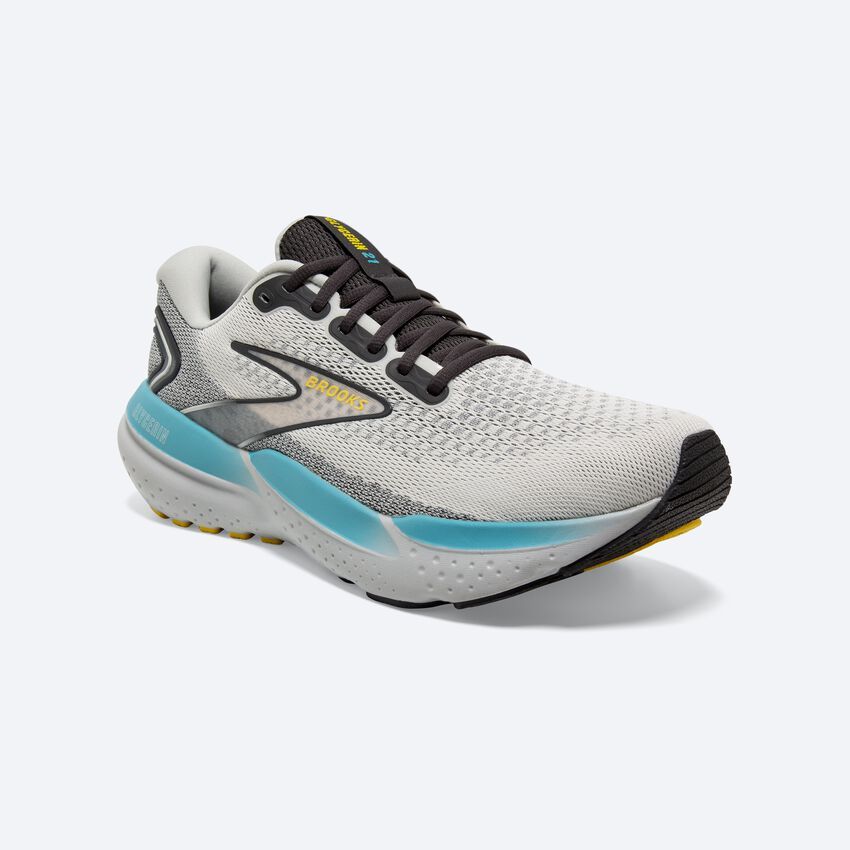
Best Workhorse Running Shoe for Beginners
Brooks Glycerin 21
Credit: Brooks
This shoe offers super comfortable yet modest cushioning for those who don’t love a super high, plushy stack. Every time I lace these shoes on, I feel a sense of float and plush on my easy runs that I typically only get out of a much more cushioned shoe. Less soft cushioning means these are also on the more durable side.
I found these aren’t the most responsive shoes in my rotation. However, if you are on the lookout for a shoe that can handle a lot of steady miles and a good amount of cushion, the Glycerin is a top pick as a daily trainer.
Weight9.8 ozHeel to toe drop10 mm
What to Look for When Shopping for Running Shoes for Beginners

Fit: The fit will usually be the trickiest one to get right. Everyone has a different shape in their feet, oftentimes asymmetric. Good fitting shoes will fit snug around your feet without being too tight because your feet will naturally swell as you run. The heel should feel secure without much movement, sometimes a runner’s knot may be useful. Need some red flags? If it’s too narrow around your midfoot, if your toes feel squished together, or when we get the dreaded heel rub, it’s probably a no-go.
Cushioning: Cushion is the amount of thickness in the midsole. Cushioning is based on personal preference and will vary on the type of shoe you are looking for. This aids in shock absorption and can make running less painful. However, we want the cushion to fit the task at hand. So if we are thinking of getting a shoe to do lots of miles at a steady pace, max cushion might be your best bet. However, when we get too pillowy soft with the cushion, we can risk losing the bouncy and reactive attributes of a shoe.
Support: There are a bunch of shoes that offer support for all types of runners. Neutral running shoes typically fit a pretty good percentage of runners. Stability shoes may be suitable for those who have their feet roll inward (over-pronation) or outward (supination) when making contact with the ground.
Drop: The drop is calculated by taking the distance between height of the heel and the height of the toe, usually measured in millimeters. Typically a higher drop will mean a heavier shoe whereas a lower drop will give us a lighter shoe. The higher heel drop may also provide more arch support to give relief to the foot and ankle while running. The higher the drop, the more you’ll want to reserve your shoes for running only. Shoes with a high drop can significantly change the mechanics of how you move laterally or perform basic exercises (like deadlifts and squats).
Advertisement – Continue Reading Below
Does the Type of Shoe Really Matter?

It can make a huge difference when you find the right shoe for you. Comfortability is of utmost importance especially when those miles start adding up. Based on what you are using the shoe for, the type of shoe will definitely matter. If you are looking to get some casual miles in every once in a while, there won’t be a need to wear expensive super shoes.
I’m New to Running, How Do I Get Started?

Avoid going out too hot when you are starting out. Instead of trying to run 5 to 10 miles a day in your first days of running, focus on running 1 or 2 miles consistently for your first week. Gradually add a half-mile or so every week to that distance. This will help you maintain better running mechanics over the long haul.
Aim to add in strength training at least once a week, focusing on exercises that strengthen your glutes (hip thrusts), quads (squats and lunges) and core (planks and hanging leg raises). You don’t need to spend a ton of time in the weight room, but those strength moves will help finetune your running stride and give you more power with every step.
What Other Running Gear Do I Need?

If you find yourself carrying a lot of things like your phone, keys, gels, or wallet, a running belt might be a great pick up to keep your belongings secure. A watch or chest strap that can measure your heart rate is very useful for monitoring how intense your runs are. Lastly, a way to carry water like a water bottle or hydropack can be important when you find yourselves needing to hydrate while on the go
Advertisement – Continue Reading Below
How We Selected the Best Running Shoes for Beginners

Over the past few years, we’ve been researching and testing new fitness shoe models from a wide range of brands. Men’s Health’s fitness editors and contributing writers including Eric Sung, C.S.C.S., Fitness Director Ebenezer Samuel, C.S.C.S., Senior Fitness Editor Brett Williams, NASM, and Fitness and Commerce Editor Talene Appleton, NASM, collaborated on the top beginner running shoes to evaluate more than a dozen shoes and compare notes. In our assessment, we focused on factors including support, cushioning, durability, and fit. We also considered price point, as some beginner running shoes provide a better overall value than others.
Why You Can Trust Us

At Men’s Health, we take great pride in providing our readers with reliable and trustworthy product recommendations. We believe that our readers deserve the best, which is why we always make sure to conduct thorough research and testing before making any recommendations. Our writers and editors are experts in their own right, using their informed opinions to select products and ensuring that our content is of the highest quality.
Our product recommendations are purely editorial, and while we may receive free products to test and review, we only recommend the products we are most impressed by. We never let retailers or public relations contacts dictate our content or product coverage. Which is why you can trust us to provide you with reliable and unbiased product recommendations.
Read More About Our Favorite Running Shoes

Eric Sung, CSCS, is a New York City–based trainer and a member of MH’s Strength in Diversity Initiative.He specializes in athletic training and recently completed his first triathlon.
>>> Read full article>>>
Copyright for syndicated content belongs to the linked Source : Men’s Health – https://www.menshealth.com/fitness/g46179615/best-running-shoes-for-beginners/


























![Forest ecology cannot be reduced to arithmetic, says M.I. Varghese [Interview] – Mongabay-India](https://earth-news.info/wp-content/uploads/2025/12/328946-forest-ecology-cannot-be-reduced-to-arithmetic-says-mi-varghese-interview-mongabay-india-120x86.jpg)





